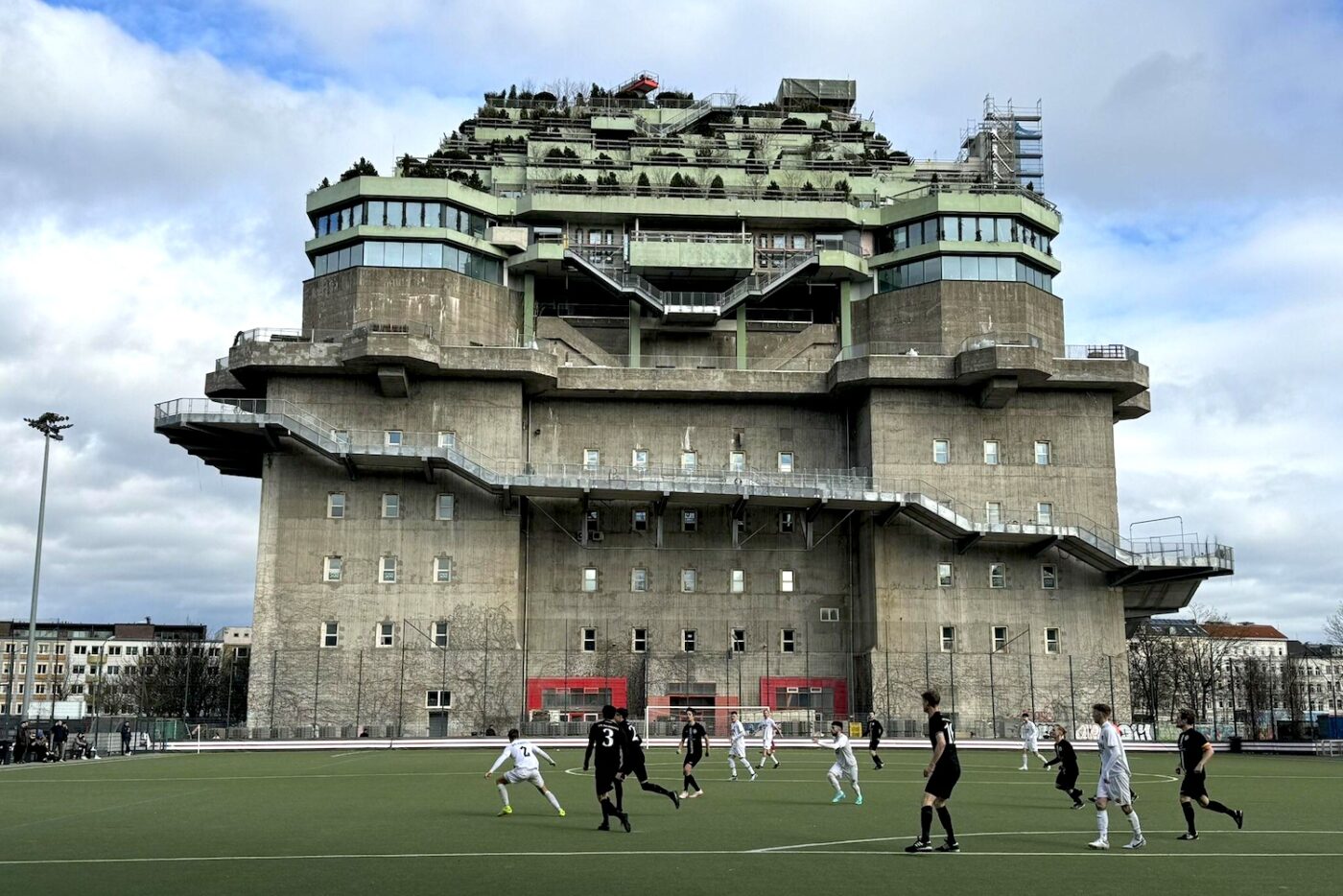We’ve heard some whacky hotel stories in our time — take the bloke who lived rent-free in a Manhattan hotel for years or the nuke-powered AI-piloted ‘sky hotel’ as prime examples — but none took us quite so by surprise as this one, in Hamburg, Germany.
In a manner many could have predicted, history has had a complicated meeting with the modern age at the final unveiling of a huge former Nazi bunker in Hamburg which has been transformed into a luxurious hotel… and not without a decent amount of intrigue and controversy accompanying it. It took an A$150 million lavish makeover to bring a once-grim concrete fortress back to life as a rather pretty, self-proclaimed ‘cultural hub’.
Bunker To Boutique
For generations, a five-story colossus that was originally built in 1942 has towered over Hamburg as a formidable reminder of Germany’s less popular days. One of many fearsome ‘flak towers’ constructed by the Nazis, the bunker was designed to serve two functions: protection from bombing raids and as a demoralising monument to the power and enormity of Hitler’s regime.

Since the exterior walls are well over 8 feet thick — with an 11.5-foot reinforced concrete roof to boot — a long debated demolition turned out to be logistically impossible, and so city officials chose renovation over demolition… we’ve got a funny feeling that a hefty payout from developers may also have had something to do with it. Anita Engels, chairwoman of the Hilldegarden neighbourhood association, said this:
“The idea of raising the height of the building with greenery was to add something peaceful and positive to this massive block left over from the Nazi dictatorship.”
A massive renovation — complete with a 134-room hotel, concert hall with 2,000 seats, multiple restaurants, oh-so-trendy bar, and rooftop community garden — will fill the once gloomy space. This is part of a wider effort to rebrand the bunker from an emblem of historic oppression into one of future-oriented community and culture.

A Controversial Revival
As pretty as the finished article may be, the project has not been without its detractors. Some critics have pointed to the trivialization of history by using a Nazi-era building as a luxury space. However, for the backers, the reinvigoration of the bunker is being spun as an effort to reappropriate the past, helping retention of memory and education. A local resident, Dieter Muller, said this:
“It’s a touchy subject, but I think—to turn this space into something positive, something that benefits the community—is a step towards healing.”
During the war, up to 25,000 civilians took refuge in the St. Pauli bunker during the disastrous Allied bombings of Operation Gomorrah in 1943. Following the war, it was used for a range of purposes, from sheltering the homeless to providing office spaces for a TV broadcasting centre and advertising firms. In the 1950s, it became a live venue for musicians, nightclubs, and a radio station. It even boasted a climbing gym, once upon a time.

Embracing The Future
While the vibe being put out by developers is that this is a testament to Germany’s future, the hotel also nods to its past, with a memorialization of its wartime history and stories of the people who built it within only 300 days displayed in a museum exhibition about the process on the first floor.
While Germany and Austria still fight over the legacies of their Nazi past, the St. Pauli bunker speaks to a more complicated but largely optimistic step toward fitting history into contemporary life.
